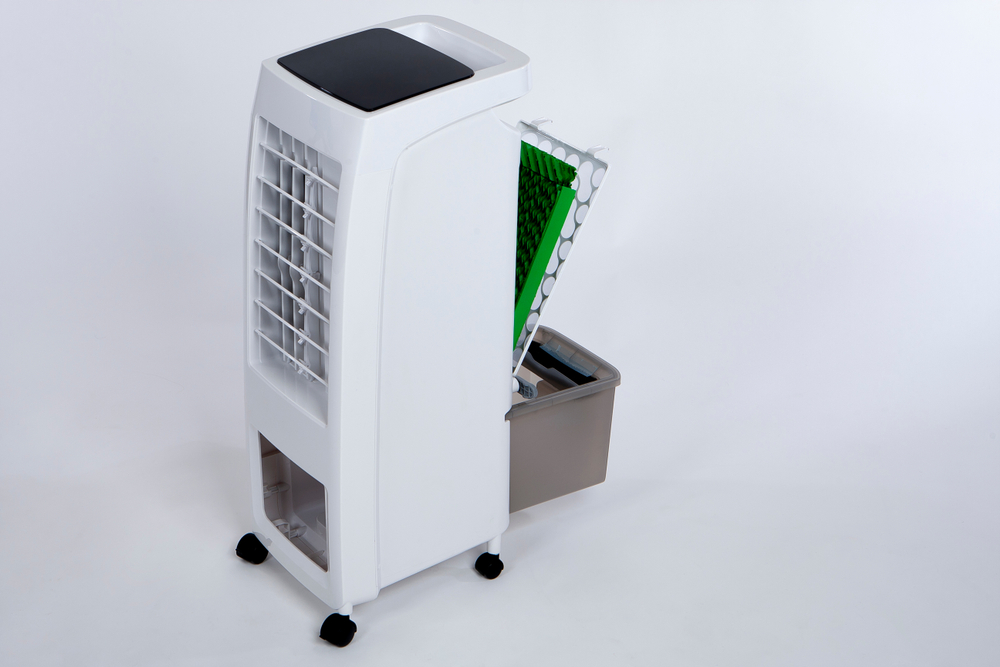
Which RPM is Best for a Portable Swamp Cooler?
December 11, 2023 10:40 pm Leave your thoughtsWhen it comes to selecting the optimal RPM (Revolutions Per Minute) for a portable swamp cooler, there are several crucial factors to consider. Portable swamp coolers, also known as evaporative coolers, are a cost-effective and energy-efficient alternative to traditional air conditioning systems. These coolers work by evaporating water to cool the air, making them perfect for areas with low humidity. But how do you determine the ideal RPM for maximum cooling efficiency? In this blog, we’ll delve into the technical aspects and explore the factors that affect RPM selection for portable swamp coolers.
Understanding the Role of RPM
RPM plays a vital role in determining the effectiveness of a portable swamp cooler. It directly correlates with the amount of airflow and evaporation, which are crucial for efficient cooling. When the fan blades rotate at higher RPM, they generate more airflow and provide better cooling performance. However, it’s essential to strike a balance between performance and energy consumption to ensure optimal cooling efficiency.
Factors Influencing RPM Selection
1. Cooler Size and Cubic Feet Per Minute (CFM)
The portable swamp cooler’s size determines how much air it can cool within a given time frame. CFM measures the volume of air the cooler can move per minute. Larger coolers generally require higher RPMs to achieve the desired CFM, ensuring efficient cooling in larger spaces.
2. Environmental Conditions
The ambient temperature and humidity levels of the area in which the portable swamp cooler will operate play a crucial role in RPM selection. Hotter, drier environments may require higher RPMs to maximize cooling efficiency, whereas cooler or more humid environments may allow for lower RPMs without compromising performance.
3. Fan Blade Design
The design and shape of the fan blades greatly influence the airflow and cooling performance of a swamp cooler. Blades with a steeper angle or a more aggressive pitch can generate more airflow at lower RPMs. These designs are often more efficient and provide better cooling capabilities compared to traditional fan blade designs.
4. Motor Power
The power of the motor driving the swamp cooler’s fan directly affects the RPM range available. More powerful motors can support higher RPMs, enabling faster and more efficient cooling. However, ensuring that the selected RPM does not overload or strain the motor is important, as this can cause premature failure and reduce the unit’s lifespan.
Choosing the Optimal RPM
Determining the perfect RPM for a portable swamp cooler involves considering the abovementioned factors. A higher RPM can provide faster cooling in larger spaces, but there are energy consumption implications involved. To strike a balance between performance and energy efficiency, here are a few guidelines to follow:
1. Consult the Manufacturer’s Recommendations
Every portable swamp cooler model is uniquely designed, and the manufacturer often provides optimal RPM guidelines for their specific product. These recommendations are based on extensive testing and are the best starting point for selecting an RPM that suits your cooling needs.
2. Evaluate Your Environmental Conditions
Consider the average temperature and humidity levels of the area in which the cooler will operate. Hotter and drier environments typically require higher RPMs to maximize cooling efficiency. However, lower RPMs may be sufficient to achieve the desired cooling effect in cooler or more humid environments.
3. Size Matters
The cooler size directly affects the RPM required for optimal cooling. Smaller units may be suitable for personal use or smaller spaces and operate efficiently at lower RPMs. Larger units, on the other hand, generally require higher RPMs to deliver adequate airflow and cooling efficiency.
4. Balance Power Consumption
While higher RPM might provide better cooling performance, it usually translates to increased power consumption. Ensuring your swamp cooler operates at an RPM that strikes the right balance between cooling efficiency and energy consumption is critical. Consult the manufacturer’s recommendations and consider your specific cooling needs to make an informed decision.
Contact Us Today
Determining the best RPM for a portable swamp cooler involves a holistic understanding of various factors. From cooler size and CFM to environmental conditions and motor power, each component plays a crucial role in selecting the optimal RPM. By considering all these factors, users can maximize cooling efficiency while minimizing energy consumption.
Are you searching for the perfect portable swamp cooler for your cooling needs? Visit Premier Industries, Inc. today to explore our range of high-quality portable swamp coolers. Our technical experts will guide you in selecting the best model with the optimal RPM to ensure efficient and cost-effective cooling. Don’t compromise on comfort – experience the cooling power of our industry-leading portable swamp coolers today!
Categorised in: Swamp Cooler
This post was written by Mike Nicolini
